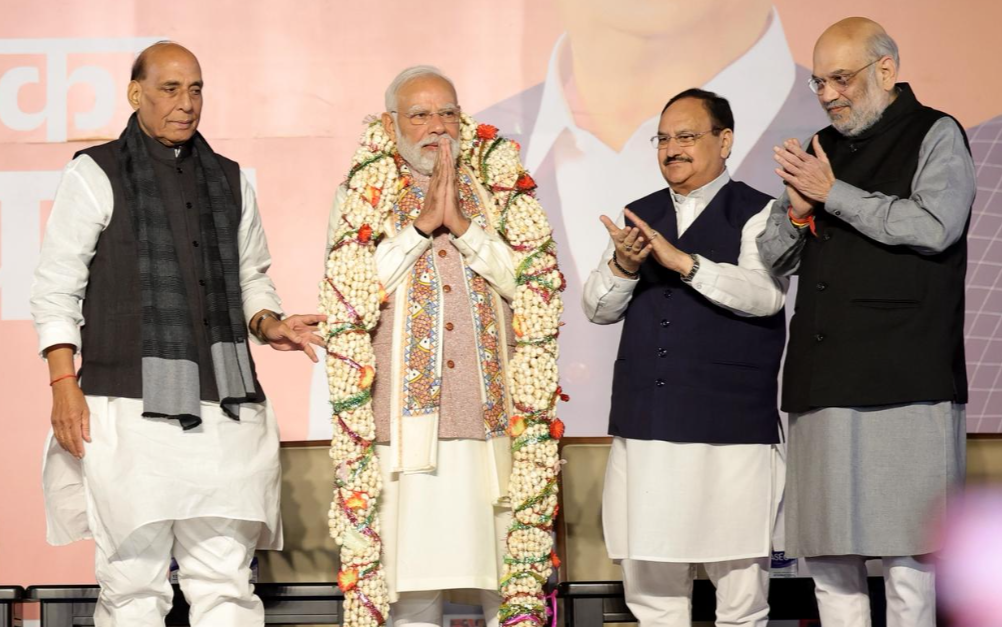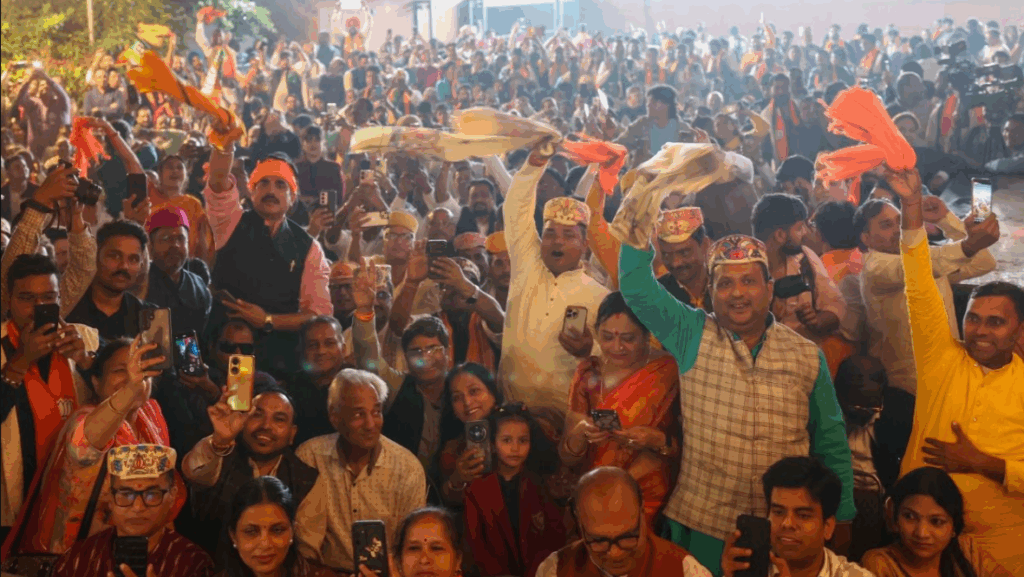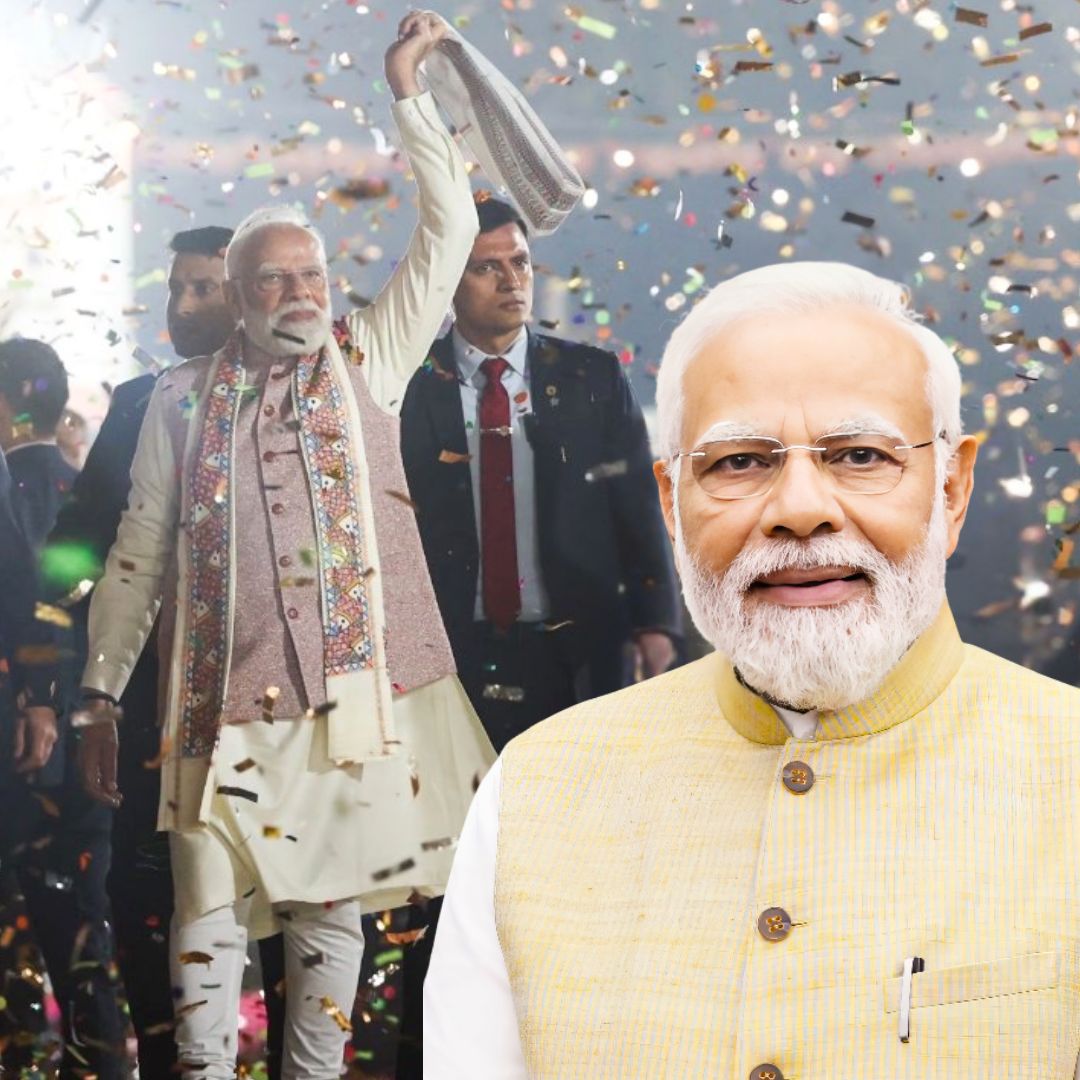Prime Minister Narendra Modi, in his victory speech following the NDA’s decisive win in Bihar’s 2025 Assembly Elections, introduced two sharp political coinages: the ‘MY formula’ symbolising Mahila (women) and Youth as the key voters behind the mandate, and ‘MMC’, referring critically to the ‘Muslim League Maoist Congress’, a term intended for the Opposition alliance.
Modi thanked Bihar’s people for their trust and credited the win to development-focused governance. Opposition parties, especially Congress, grappled with the results, with Rahul Gandhi questioning the election’s fairness.
The NDA surged ahead, over 200 seats out of 243, reshaping Bihar’s political landscape and casting doubts on Opposition unity. Modi also vowed to end what he called “jungle raj” in West Bengal, adding that just as the Ganga flows from Bihar into Bengal, this mandate too has paved the way for a future BJP victory there.

Modi’s New Political Narrative
Modi began his address by expressing humility and gratitude to Bihar’s voters, recalling his campaign start in the village of socialist leader Karpoori Thakur. He highlighted Bihar’s aspirational mood and projected the victory as proof of the state’s path to development.
Modi warned against old caste-based electoral formulas, famously termed the ‘old MY formula’ representing Muslim and Yadav vote banks, asserting a new electoral equation has emerged focused on women and youth.
Sharpening his criticism of the Congress, he coined the ‘MMC’ acronym, pointing to an alliance of Muslim League, Maoist, and Congress forces he believes pursue negative politics. Modi hinted at deepening internal rifts within Congress that threaten its unity.
Speaking from the @BJP4India HQ.
— Narendra Modi (@narendramodi) November 14, 2025
https://t.co/z9kQk3U2be
Women and Youth Pivotal in Bihar’s Outcome
Mukesh Sahani, leader of the VIP and projected deputy chief minister candidate, linked his party’s poor performance to the NDA’s strong appeal among women voters. Sahani highlighted the positive impact of financial schemes such as the Mukhyamantri Mahila Rojgar Yojana, whose payments have reached over 1.21 crore women, as pivotal in shaping voter sentiment.
He noted a shift in political dynamics from opaque distribution of black money to transparent welfare schemes, reflecting a clean approach favored by the electorate. With the NDA winning nearly 200 seats and BJP alone securing a near 95% success rate in the seats it contested, the alliance is firmly in charge of Bihar’s political future.
Meanwhile, the Opposition Mahagathbandhan, which includes RJD, Congress, and Left parties, could win barely 35 seats, highlighting its fragmentation and struggle to present a coherent message.

Bihar Verdict: Victory for the NDA
In the 2025 Bihar Assembly elections, the National Democratic Alliance (NDA) achieved a landslide victory by winning 202 out of 243 seats. Within the NDA, the BJP secured 89 seats, while Janata Dal (United) (JD(U)) got 85.
Smaller allies also made gains: the Lok Janshakti Party (Ram Vilas) won 19, Hindustani Awam Morcha 5, and Rashtriya Lok Morcha 4 seats. On the opposition side, the Mahagathbandhan managed only 35 seats, with RJD at 25, Congress at 6, and the Left and others sharing the rest.
The Logical Indian’s Perspective
This election marks a significant political shift where inclusion of women and youth in the electoral process has proven decisive. While Modi’s ‘MY formula’ underlines the importance of these groups for broad-based progress, the derisive ‘MMC’ label highlights continuing polarisation and adversarial politics.
True democratic strength emerges through respectful dialogue, kindness, and a focus on inclusive development rather than divisive rhetoric. It is critical for Bihar’s future that political actors foster empathy, coexistence, and constructive engagement.
Read More: Bihar 2025 Election Result: Who Won, Who Lost, and What the Numbers Reveal












